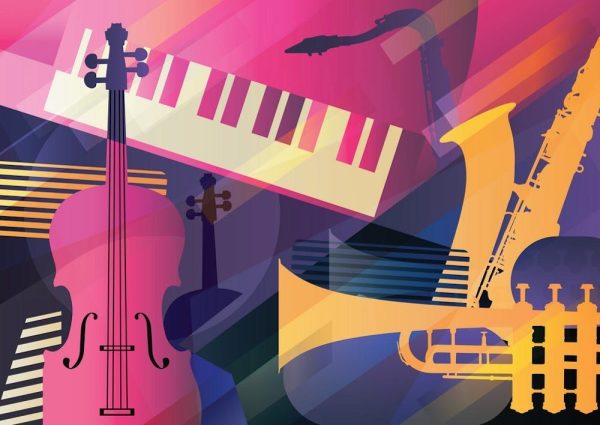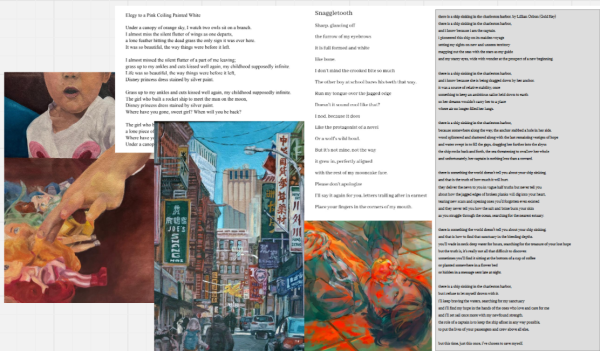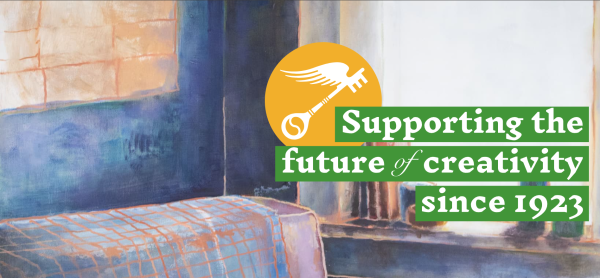What is Going on in Iran Right Now and Why You Should Care (Part 2)
Women. Life. Freedom- زن زندگی آزادی
This article is part 2 to my summary of the current Iranian revolution. The last issue explained the historical context to how Iran got here, and I highly suggest you go read that article first to fully understand what is going on today.
What Does Iranian Society Look Like Today?
Following 1979, as mentioned in the previous article, Ayatollah Khomeini issued thousands of executions of political prisoners and people opposed to the revolution one instated in power. Iran was riddled with violence, fear, and uncertainty, which left them vulnerable leading up the Iran-Iraq War. The war primarily affected poor families, whose young boys were preyed upon and exploited by the regime, who told them that death in battle was an honorable fate. The war left 500,000 soldiers dead between both sides and the tragedy is felt by families to this day. Modern-day Iran does not look the way it did following the revolution. There is this idea of a “street life” and a “home life” that Iranians carefully balance in their day to day. It is almost a part of the culture. Just because something is banned, does not mean that Iranians do not partake in the activity. They deserve to have a life and they do their best to preserve their identity in the private spheres, in their homes.
Iran is also in an economic crisis which has affected the entire country, but especially the middle and lower classes. These economic struggles, along with government corruption, can be primarily attributed to sanctions imposed on Iran by western countries. After the United States pulled out of the nuclear agreement in 2018 under the Trump administration, sanctions were reimposed on Iran and “secondary sanctions” were added to other entities engaging commercially with Iran. These secondary sanctions created fears among international banks to cooperate with Iran, which caused an extreme financial crisis in the country. People cannot afford their medications or food. The Iranian currency, the rial, has significantly lost value and inflation rates have lingered around 30%. Hospitals have relied on medical equipment from outside the country, which they can no longer access and the universal health care system is failing. People with rare conditions do not have access to the medical care they need and, due to the poverty rates, cannot afford to travel to access health services. Human Rights Watch reports that,
“People with severe forms of EB are now unable to access specialized bandages and are at significantly increased risk for bacterial infections, sepsis, fusion of fingers, and contractures of joints. Individuals with epilepsy who are resistant to common treatments and unable to access foreign-made medicines may suffer frequent, uncontrolled seizures that risk injury and result over time in severe, permanent brain damage”
Not only is medical care limited, basic food necessities have exponentially risen in price. Fresh foods like meat, vegetables, and fruit, have especially been hit hard, which creates a reliance on processed foods. Food prices have been reported to have risen 60%. Many families cannot even afford to feed their children.
I cannot reiterate enough how devastating these sanctions have been for the Iranian people. Sanctions always fall on the innocent middle and lower classes. They are usually enacted to hold corrupt governments accountable for their actions, however, these governments couldn’t care less about the wellbeing of their people, so they do not create the change needed. Ordinary citizens are being punished for the oppressive governments that they are also the victims of. However, according to Mike Pompeo, ex US Secretary of State, they were aware their sanctions would hurt Iranian people. Pompeo revealed on CBS News,
“Things are much worse for the Iranian people [with the US sanctions], and we are convinced that will lead the Iranian people to rise up and change the behavior of the regime”
I have no words to describe how sickening it is to hear a US leader admit to knowingly executing a human rights crisis, hoping that Iranians’ life will get so unbearable, they will have to risk their life to fight against their government. Shocking, but not unbelievable.

I remember watching the Anthony Bourdain Parts Unknown episode where he visited Iran and being in awe that, instead of showing anti-American murals and propaganda, he showed the world the real Iran. The kind people who are overshadowed by their government, the ancient, rich culture, and the young people silently resisting who would soon become the regime’s worst nightmare.
What is Going On?

The protests were sparked by the murder of Mahsa Amini, whose name is actually the Kurdish “Zhina”. Her ancestry is something to note, as Kurdish people have a history of suppression in Iran. She was visiting her family in the capital, Tehran, when the infamous “morality police” detained her for “improper hijab”. She was taken to the detention center, where the police beat her into a coma. Amini was transferred to the hospital and died of her injuries. The photo of her in the hospital, unconscious with a bruised face and covered in blood went viral on social media, prompting outrage in Iran and worldwide. Despite this information, the government claims she died of a “heart attack”, which the family states is completely unfounded as Amini did not have a history of health issues.
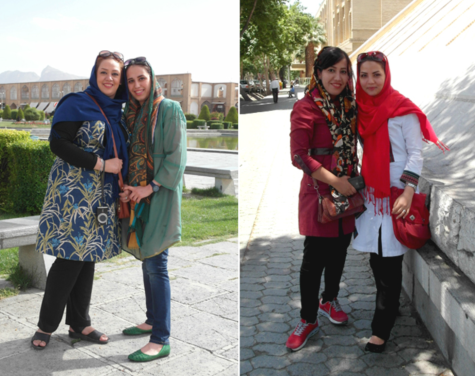
Zhina/Mahsa Amini was also dressed in typical Iranian fashion. It is quite common to see women wearing loose fitting hijabs and western clothing on the streets. However, the morality police are subjective in their enforcement and they are unpredictable with their punishments. A woman whom they deem as “improper” might get a verbal warning, or might even be ignored, while other times they may face a violent repercussion. There is also a divide between who they enforce it on. There is a huge wealth gap in Iran, circumstances that were worsened by the sanctions mentioned earlier. North-Tehran is where the uber wealthy, soccer celebrities, and influential government families live and it is rare to see the white police vans roam these streets. Azadeh Moaveni, guest journalist for the NYT, states,
“a distinguishing feature of Iranian life in recent years has been the selective enforcement of the hijab laws. The pockets of society that have managed to flourish in spite of the economy’s overall decline have lived in relative freedom from such restrictions for years, protected by their wealth, exclusive neighborhoods and regime connections”.
-Azadeh Moaveni, “‘It’s Like a War Out There.’ Iran’s Women Haven’t Been This Angry in a Generation”

Women in these areas will frequently go hijab-less, a reality much more frightening for the average woman. Also note that the election of conservative Ebrahim Raisi in 2021 came with increased enforcement of the hijab rules, after years of the issue not being a priority. The fight in Iran also goes beyond the hijab. There are countless other ways women are targeted in Iran ,whether it be the right to choose their clothing, the right to their children or the right to move freely.

But yet, Iranian women are displaying immense courage, leading these protests. Following Amini’s murder, protests erupted around Iran, calling for the end of the Islamic Republic and freedom for the Iranian people. Women are burning their hijabs in the streets, people are attacking morality officers, and photographs and murals of Khomeini are being defaced and destroyed. Iranians-men, women, children- are risking their lives to fight for their country. A human rights group estimates that over 250 people have been killed in the streets, but the number is most likely much, much higher. There have been reports of morality police entering schools and kidnapping young girls to take them to “rehabilitating” institutions. All across the country- Tehran, Shiraz, Mashhad- Iranians chant “death to the dictator” and “death to Khamenei” in unison, sending echoes throughout the cities. Teenagers our age are being killed; Nika Shakarami, Sarina Esmailzadeh, Zakaria Khial, and many more.
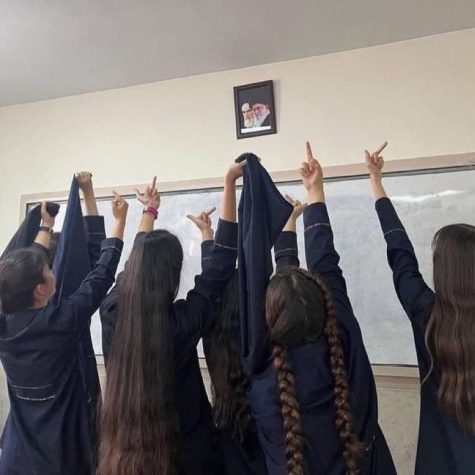
Elementary girls remove their veils in schools under the photograph of Khomeini and chant “zan, zendegi, azadi” (women, life, freedom), displaying a courage most adults cannot muster. Videos shared on social media show tear gas being thrown in people’s own homes and rumors of guards spying over them; protestors have witnessed undercover officers harassing people who buy first aid supplies at pharmacies, suspecting they are helping the injured demonstrators. Iran’s ethnic and religious minorities have been the targets of the regime’s crackdown. Kurd, Baluch, and Sunni people have been brutally put down during these protests. Zahedan in Southeast Iran, was the setting of what is being described as a massacre of Baluch people in a mosque. What is most scary for Iranians is the internet blackouts that the regime has enacted many times before, as a quick and easy way to suppress protests and limit what the outside world can see. Without the ability to organize digitally, citizens have no way of knowing what is occurring in other cities and Iranians living outside of the country are unable to reach out to their family; many have no idea whether their loved ones are okay or not.
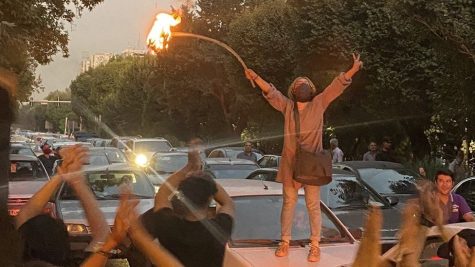
Click top right corner to watch clips from the protests.
In September, Shervin Hajipour, released a song called “Baraye”, which translates from Farsi to “for”, where he lists the reasons Iranians are fighting, like “for the missing children” and “for the feeling of peace”. The video amassed over 40 million views in just one day. However, Hajipour was later arrested and the song was removed from social media. He posted an ominous video where he insists that there was a “misunderstanding” about the song and that it was never about revolution. However, it is clear he was forced to make the video by the government. Nevertheless, the song has become an anthem worldwide, and is sung by schoolchildren across Iran and chanted at protests in Berlin, Los Angeles, and New York.
https://www.youtube.com/watch?v=TPyHuCZzsVA
The regime frequently uses this tactic to silence activists without backlash. Iranian rock climber, Elnaz Rekabi, competed without her hijab in Seoul last week. She was detained at the airport before her return to Iran, where she was forced to confess that the hijab fell off “accidentally”. It is reported that she is on house arrest and $276,000 of her family property was threatened if she did not comply.

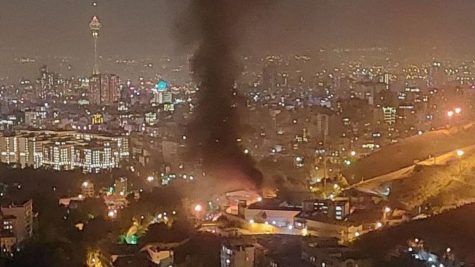
On Saturday, October 15, a scene shocked Tehran and the world. Evin prison, notorious for its imprisonment of journalists; activists; and artists, was in flames. People across the city watching from their terraces could see the smoke rising in the distance and gunshots coming from inside. This is where the top minds of Iran are jailed and there was no information on what was going on inside. The streets were jammed, as families piled into their cars, rushing to the prison to find their loved ones. Iranian media reports only 8 people died, but, again, the exact number could be higher and dozens were injured from gunshot wounds. It is terrifying when oppressive regimes start to go after intellectuals and leaders of the people.
At Sharif University, one of the top universities in the Middle East, protesting students were locked inside with security forces, where they were faced with guns and hit with rubber bullets. An industrial engineer is quoted in the NYT asserts,
“Sharif always seemed untouchable because of its place in our society and this raid was meant as a warning to all universities that if we can do this to Sharif, we will do much worse to you, so be quiet”.
One must wonder, how much longer can the revolutionary guard control the people? I have the same question, as the small minority loyal to the Ayatollah is vastly overpowered by the enraged majority. However, there are rumors that the government has started bringing in soldiers from Iraq because their own ranks are “unwilling and divided”.

There is also an issue with the way western media outlets are reporting the issue, if they even report on it at all. This is not against Islam- this is a fight against an oppressive regime which has held the country captive for over 30 years and who has twisted religion for their own corrupt interests. It’s about choice and the ability to decide how to live their own life. Additionally, this revolution is a revolution started by women, which is absolutely incredible to witness. However, what is going on in Iran goes beyond a feminist issue- it is a human rights issue. Iranians from all sectors of life have been the victims of this regime and felt its brutality. This is a fight of women against the regime, but also Iranian people against the Islamic Republic.
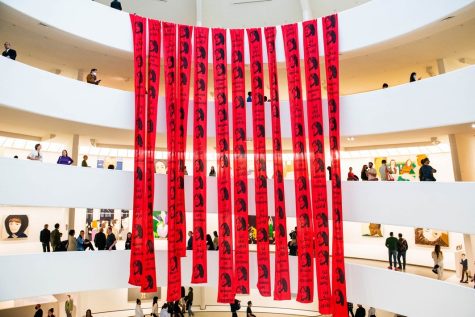
This is not the first time there have been protests in Iran-’99, ‘09, ‘19-, but many Iranians can feel the difference. Iran is a young country and the ancient relics of the 1979 revolution can no longer hold control over the anger that has been boiling over for generations. Many Iranians feel hopeful, but the fight must not die out. Too often, the western world ignores battles such as these because they think that this is the “norm” in the Middle East and that it is inherently barbaric with no salvation. But it’s not. Iranians deserve to feel the wind in their hair, to dance to their favorite music, to love freely, to read what they want, to experience liberty. Revolutions die in silence and if we continue to ignore the massive human rights strife, the regime will continue to suppress the dissenters-no matter the cost.
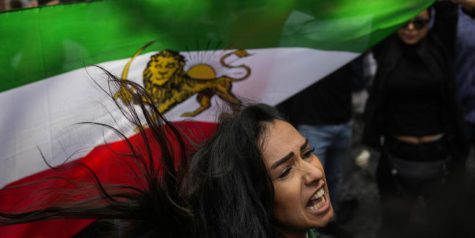
For Zhina
For Nika
For Sarina
For Iran.
To keep updated, I urge everyone to follow @Masih.Alinejad on Instagram, where she posts updates and videos everyday.




